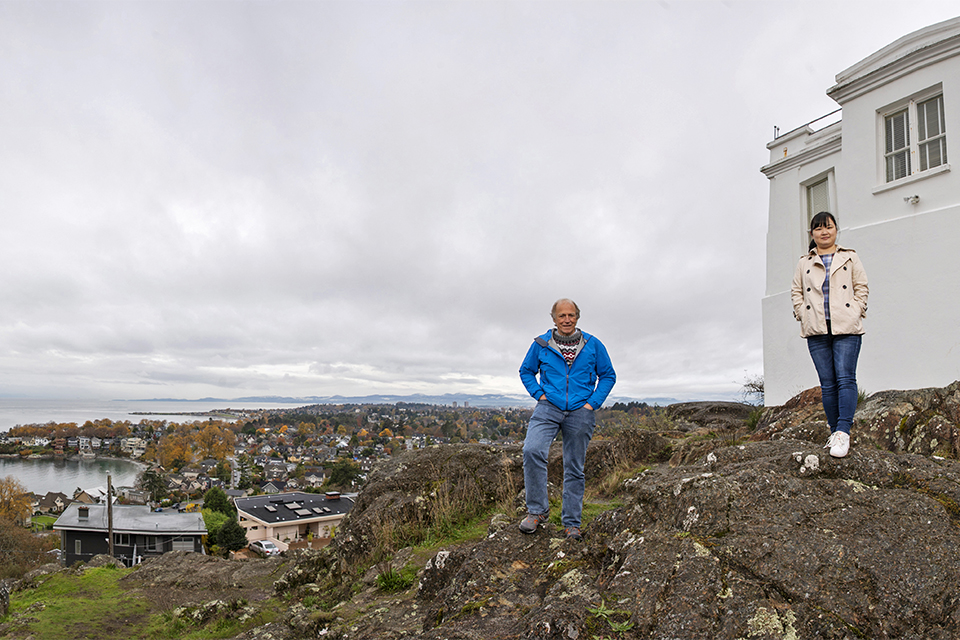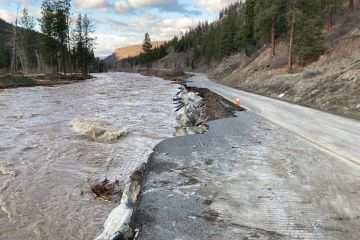Building for extreme weather
- Jody Paterson

In a warming world, most extreme weather events become even more extreme. Temperature records are broken and wildfire risks rise. Heavy rains and “pineapple express” events intensify. Extremes that once happened every 50 years begin to happen more often.
Now, the work of a postdoctoral scientist at the University of Victoria's Pacific Climate Impacts Consortium (PCIC) has updated global figures on daily extreme precipitation and confirmed that extreme rainstorms are intensifying and becoming more frequent in much of the world.
Climatologist Qiaohong Sun worked with 69 years of data from 7,293 weather stations, mostly from North America, Asia and Europe, but also some from Australia, Africa and South America. She found that extreme one-day rain storms have intensified at 68 per cent of the stations, and intensification was statistically significant at about 10 per cent of them. These heavy rainfalls are growing more intense with each degree of warming.
One in 10 stations may not sound like much, says PCIC Director and climatologist Francis Zwiers. But compared to what researchers would expect to see in an unchanging climate, it’s four times higher. Sun’s research also supports what climatologists expect from theory: that for every degree of global warming, the intensity of extreme rainfall events goes up by about seven percent.
That means that if the global climate warms by three degrees, extreme precipitation events around the world will be about 20 percent more intense than they are now, says Sun. The findings emphasize the need to build for a changing world, she adds.
More intense rain storms will bring more damage, for example, from overwhelmed storm drains and backed-up sewage systems. Homeowners, municipalities and provincial governments all have a stake in mitigating and managing the impact of extreme precipitation events, says Zwiers.
If an extreme event used to mean 50 millimetres of precipitation and it warms by one degree, that event is now 53.5 millimetres. So, is that important? One way to answer that is to think about where you live, and the fact that the storm sewers have fixed capacity. If rainfalls exceeding that capacity start to happen more often, then costly damage will also start to happen more often.
—Francis Zwiers, PCIC Director and climatologist
PCIC is a regional climate service centre located at UVic, providing practical information on the physical impacts of climate variability and change in Canada’s Pacific and Yukon regions. The increase in the climate service centre's staff to 31 from 13 in the decade that Zwiers has led it highlights the rising demand for climate knowledge and the tools PCIC develops to help with long-term planning.
Zwiers notes that many organizations are beginning to take the latest research on climate change into account in their policies. For example, BC’s Ministry of Transportation and Infrastructure requires that new engineering designs for provincial transportation infrastructure incorporate climate projections and risk analysis.
Sun’s study was funded by the Pan‐Canadian Global Water Futures research program. Her work is an important contribution to the growing body of climate studies that are informing government, developers, insurance companies and the public as they prepare for a new reality in a warming world, says Zwiers.
EdgeWise
Qiaohong Sun’s study adds nine more years of observations to an earlier study of historic weather-station data, making it current to 2018. As well, it adds regional data that wasn’t part of the first study and examines extreme precipitation trends for individual continents and regions, as well as looking at trends across the globe.
Water has replaced fire in recent years to become the leading cause of damage to Canadian homes. Damage to homes from sewer backup and basement flooding now exceeds $2 billion a year, and has been on the rise for more than 25 years.
Although mounting insurance losses show that vulnerability to local flooding is increasing, rainfall observations in many places don’t yet show the effects of global warming on extreme rainfall. Zwiers points out that the expected effect of warming on extreme rainfall is nevertheless evident in enough places to indicate that climate change can’t be ignored.
With climate warming, the “one-in-20, 50- and 100-year” extreme precipitation events that guide the design of the world’s infrastructure are expected to occur more frequently, as well as with more intensity.
Workforce needs are growing for knowledgeable people able to incorporate climate science into their work. PCIC and the Canadian Centre for Climate Services are exploring how to ensure sufficient capacity. Zwiers notes that UVic is considering the introduction of a bachelor of science degree in climate science.
Photos
In this story
Keywords: Pacific Climate Impacts Consortium, Environment, climate, research, sustainability, administrative
People: Francis Zwiers, Qiaohong Sun
Publication: knowlEDGE






